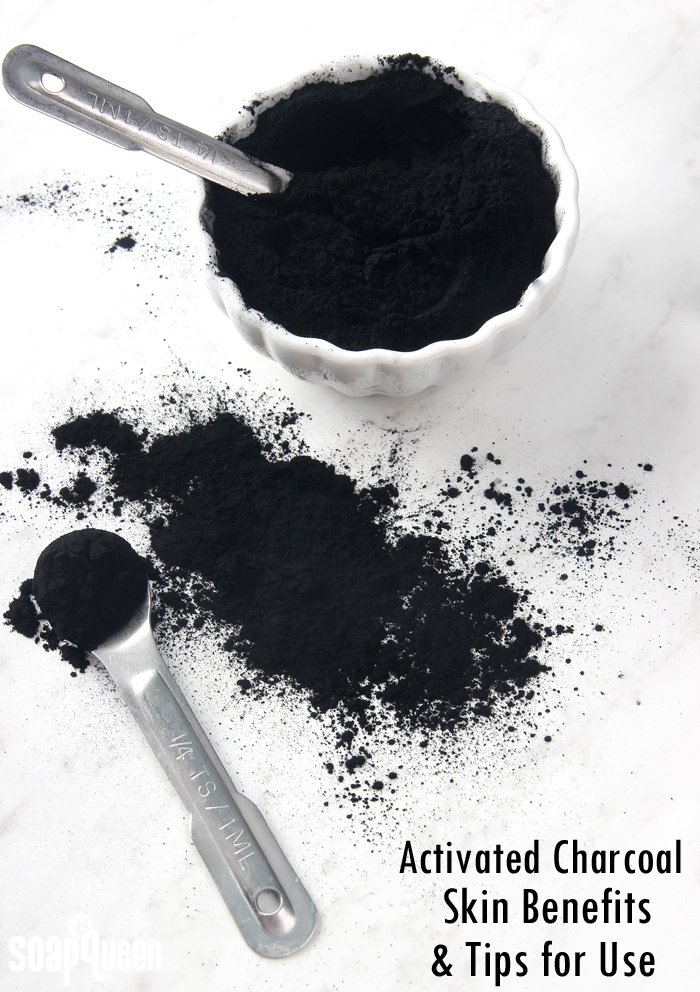
Activated charcoal has become a popular ingredient for skin care products in the past few years. But it’s not new – charcoal has been used in the beauty and medical industries for years. Charcoal is known for its ability to absorb and draw out oil from the skin. This makes charcoal a fantastic addition to soaps, scrubs, masks and more.
There are various types, including activated charcoal, sugar charcoal and Japanese charcoal (aka white charcoal). The different types of charcoal have various origins and production methods. “Regular” charcoal usually comes from wood, coal or peat. This type of charcoal is often used as fuel. Activated charcoal, on the other hand, is most commonly used for medical, beauty or purification processes. To become “activated,” the charcoal goes through a high temperature steam activation process. This process increases its surface area, which increases the charcoal’s ability to absorb and filter. This makes activated charcoal the proper choice for medical and cosmetic use.
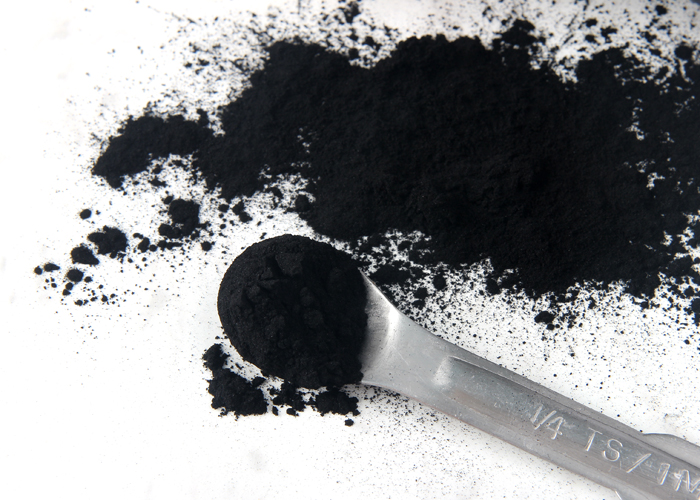
In particular, activated charcoal is fantastic for oily skin. Its ability to absorb oil and dirt from pores leaves skin feeling balanced. If you have dry skin, activated charcoal may be a little bit too drying. Some use charcoal in their hair care to add volume, and some even use it in their tooth care regimen (keep in mind the charcoal at Bramble Berry is not meant to be consumed in anyway).
Want to add charcoal to your bath and body products? Interestingly, activated charcoal is not water soluble. A great example of this was in the Black Bath Bombs Test; the bath bombs made with activated charcoal left plenty of residue on the tub, because the charcoal did not want to mix with the water. A touch of Polysorbate 80 helped the activated charcoal blend in better with the water.
 Activated charcoal is not water soluble, and does not work well in bath bombs without an emulsifier as shown in this post.
Activated charcoal is not water soluble, and does not work well in bath bombs without an emulsifier as shown in this post.
If you’re adding charcoal to your project, dispersing it in oil helps it mix in easier. Use 1 teaspoon charcoal to 1 tablespoon 99% isopropyl alcohol for melt and pour soap and a lightweight liquid oil for cold process soap. Activated charcoal can be added directly to melt and pour or cold process soap batter, but dispersing does help get rid of clumps. If you’d like to try adding it to emulsified projects like lotion, I recommend a small test batch first. We actually tried adding it to the clay mask recipes (which are essentially lotions) and found the charcoal did not mix in very well, even with plenty of stick blending (see photo below).
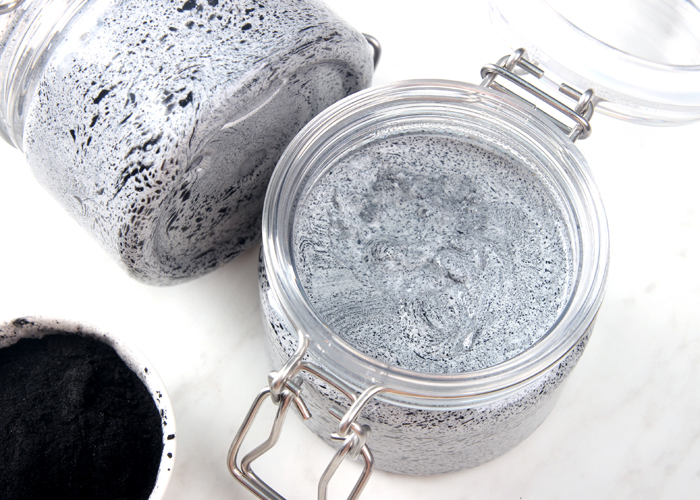 In our tests, activated charcoal did not mix in very well to emulsified clay masks.
In our tests, activated charcoal did not mix in very well to emulsified clay masks.
In addition to the skin benefits, activated charcoal gives products a beautiful black color. Charcoal can create a gray lather and transfer color to a washcloth if a lot is used in a recipe. In my experience, I have not found charcoal soap stains washcloths permanently. If you use enough charcoal to create a dark black color, chances are it will give your lather a little color. For cold process and melt and pour soap, start with 1 teaspoon of dispersed charcoal per pound of soap. Add more color until you get the shade you like. A light to dark gray shade in soap will most likely not create a gray lather.
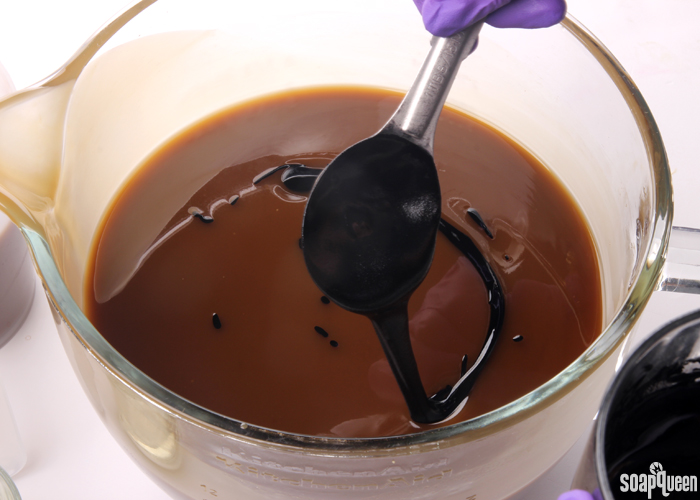 Charcoal is dispersed in oil and added to the soap batter in the Charcoal & Cedar Beer Soap Tutorial.
Charcoal is dispersed in oil and added to the soap batter in the Charcoal & Cedar Beer Soap Tutorial.
Now, let’s talk about handling activated charcoal. There is no way around it – this stuff is messy. It’s a very small and light powder, so it has a tendency to “poof” up into the air. If you’ve used activated charcoal, you know it can have a tendency to get everywhere. When working with it, I recommend closing windows and shutting off any fans to help avoid an unnecessary mess. If you do get charcoal on your hands while working with it, I recommend washing it off with water and soap. Once, I left activated charcoal on my knuckles for about an hour while formulating recipes. My knuckles were extremely dry for about a week! It has some serious absorbing properties.
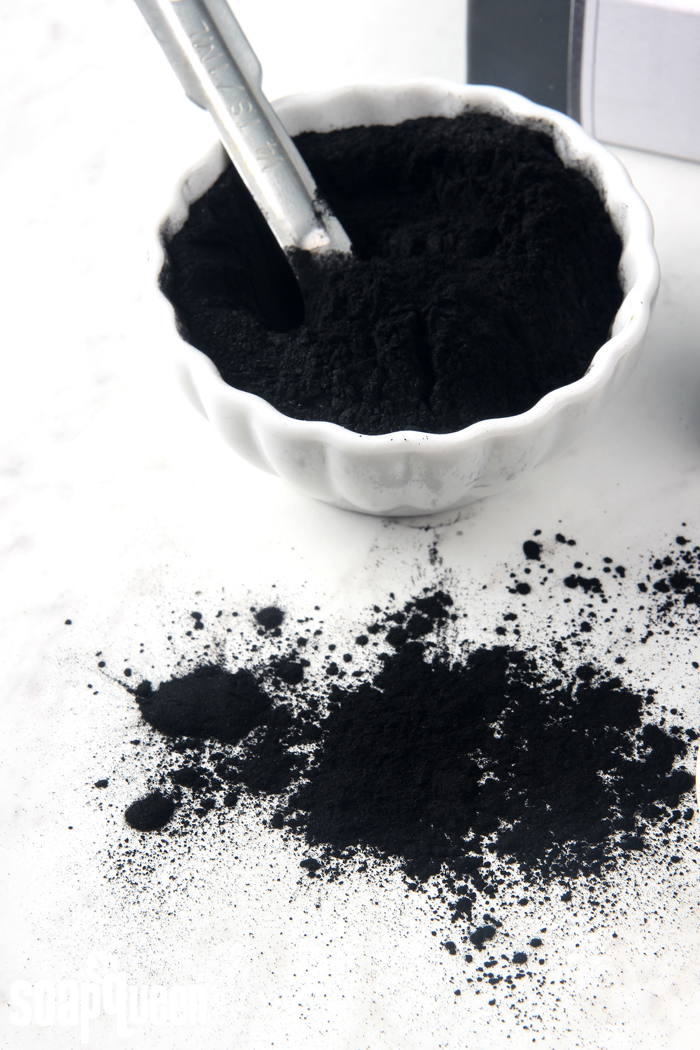
Looking for some charcoal recipe inspiration? Check out the tutorials below, and be on the lookout for more recipes this week!
- Rose Clay & Charcoal Soap Tutorial
- Gold Mine Cold Process Soap
- Wild Leopard Print Cold Process Soap
- Honey Bee Funnel Pour Cold Process Soap
- Creamy Cow Milk Cold Process Soap
- Charcoal & Cedar Beer Cold Process Tutorial
- Rose Gold & Charcoal Heart Soap
- Honey Bee Soap Tutorial
- Dragon’s Breath Cold Process Soap
- Charcoal and Rose Clay Spa Bar
- Minty Clay Melt & Pour Bar
- Natural Colorant Taiwan Swirl
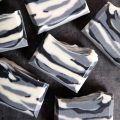
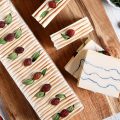
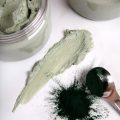
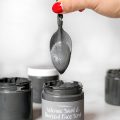
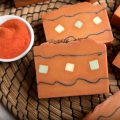
How much activated charcoal should I add when making 48oz of cold processed soap? And at what point is best to add it?
It depends on how dark you want the color. For a darker color I would use about 1 tbsp per pound of cold process soap mixed in a lightweight oil; so for a 48 oz batch you would use about 3 tbsp of Activated Charcoal.
You can then add the oil/charcoal mixture in at light trace.
Hello,
I am very much a beginner to cold process soap making, this was my sixth batch of soap. After watching a video of a pro soaping at room temperature to get very even lines in striped soap, I decided to attempt this method as practice on a half batch of charcoal soap I was making to cut up and use pieces of in a future batch. I don’t know what the exact temps of the oil and lye water were but after sitting out on the counter for about an hour and a half they were barely warm to the touch, oils were still clear (I heated them up enough to melt the butters). I stick blended minimally as I had seen in the video but it did not appear that any oils were still separated. It did not get hard or go thru any false trace. I poured it into a silicone mold and let it sit for about 4 days I think and when I attempted to take it out of the mold, I noticed it was gray, not the usual black, very soft, and it just crumbled. I assume that this indicates the whole loaf turned to soda ash? I was sure I had done it the same way she did in the video, so I am wondering if my recipe is the problem? Thanks in advance for the help.
Recipe:
6.6oz Olive Oil Pomace
3.3oz Apricot Kernel Oil
3.3oz Coconut Oil
2.3oz Palm Oil
.5oz Cupuacu Butter
.5oz Shea Butter
2.3oz Lye
5.5oz Water
.5Tbsp Activated Charcoal Powder
.7oz Birchwood Oud Fragrance Oil
Also, curious if there is anything I can do with this other than just throwing it away?
Thanks!
We’d definitely like to help you troubleshoot, but it will be easier to do via email so that we can communicate back and forth more easily. Send your message to our customer service team at [email protected] with pictures if possible for help with your recipe.
I attempted to make bath bombs with activated charcoal and some mica powder for extra color, but it didn’t turn the water black like planned, it just clumped up into a bunch of black dots on top of water and turn my skin black. Did I use too much or should I just not use charcoal at all?
It sounds like you may not have used quite enough. It also helps to use Polysorbate 80 to help the Activated Charcoal blend into the bathwater.
Black Bath Bombs tutorial: https://www.soapqueen.com/bath-and-body-tutorials/black-bath-bombs/
My daughter wants me to make her a liquid charcoal soap. Can I add activated charcoal to my homemade liquid soap recipe? My concern is whether or not it will settle or separate out. I would like for the liquid soap to be a nice black color. Has anyone had any experience with this?
You can definitely add charcoal to your liquid soap – since it’s a particle-based colorant, you will notice that it starts to sink in your product over time. A quick shake will fix it, but it may not be ideal if you plan to sell it.
Hi I tried to make melt and pour charcoal and pink clay soap. But while using the charcoal residue was left on the body. Had mixed charcoal with alcohol before adding to the melt and pour. Is it possible that charcoal is coming on body because I had put little more charcoal to get black color as I had mixed in goats milk melt and pour
Charcoal soaps tend to lather black. But if it is more than you’d like, reducing the amount of charcoal should solve that problem. If you want to get a dark color without using as much charcoal, using clear melt and pour base will be your best bet.
Get it here: https://www.brambleberry.com/SFIC-Pure-Melt-And-Pour-Soap-Base-P6628.aspx
I have made a charcoal/tea tree oil soap by cold processing. It was a beautiful black with swirls of white. Now I tried the same recipe by hot processing and it turned out a blue grey. My question is why the difference in color?
The color can change depending on several factors like temperature and the oils you’re using. For instance, if the olive oil is more yellow, it can make the black look gray or greenish. Also, a hot gel phase can make the color more vibrant.
For your next batch, prep extra color. If you notice the color isn’t as black as you want it, add a bit more. Then, insulate it to force gel phase.
This post talks more about gel phase and insulating soap: http://www.soapqueen.com/bath-and-body-tutorials/tips-and-tricks/when-to-insulate-handmade-soap/
And this talks about how to get vibrant colors in soap: https://www.soapqueen.com/bath-and-body-tutorials/tips-and-tricks/how-to-get-vibrant-colors-in-soap/
Great but I can’t help but notice you are using metal spoon to mix which you should avoid any metal objects when using charcoal.
We’ve had good results with charcoal when using metal spoons, but you can use silicone or plastic if you like.
I made a three layer soap (shea, castor, palm, canola, coconut) that began beautifully but ended in possible disaster.
At trace I added ylang ylang EO, colloidal oatmeal, 1/2 tsp salt, sodium citrate & BHT, mixed in a bit of alcohol. No problem. Traced like pudding. Laid that down as first layer. Added 1 tsp of activated charcoal mixed w/alcohol into the mix and it turned a pretty gray and that was my 2nd layer. Then I got into trouble. For the 3rd, darkest layer, added the rest of the activated charcoal which was dispersed in about 1 TBSP of alcohol, and it thinned out the batter considerably. I waited and it stayed thin, but I added it to the top of the loaf as the 3rd layer, hoping it would firm up so I could texture it a bit.
Now it has a thick layer of oil on top and is still to thin to texture. I am going to leave it a few days to see if the alcohol evaporates and the oil re-absorbs. If not I’ll just have to rebatch.
What do you think happened?
Sorry, I missed this question. How is that soap doing now?
I’ve tried making an activated charcoal soap a number of times and i end up with an extremely gray bar with tons of ash on the top. I’ve tried a few different ways to add the charcoal in hopes to ensure a black bar and not gray. I’ve added the charcoal to the lye water solution and not the batter and still wound up with gray bars 🙁
to top it off, i put the loaf in the freezer to prevent gel phase but i end up with a white almost grainy soap top. any tips on what to do to keep my bars truly black?
You need to use quite a lot of charcoal to get a truly black bar. It helps to soap at higher temperatures around 120-130F and then gel the soap. A hot gel phase can help the color look darker.
Learn more about gel phase here: http://www.soapqueen.com/bath-and-body-tutorials/tips-and-tricks/gel-phase/
And more about insulating soap here: http://www.soapqueen.com/bath-and-body-tutorials/tips-and-tricks/when-to-insulate-handmade-soap/
Gel phase will also help prevent the soda ash on top. A 10-15% water discount can help too: http://www.soapqueen.com/bath-and-body-tutorials/tips-and-tricks/water-discounting-cold-process-soap-how-why/
Learn more tricks for preventing soda ash here: http://www.soapqueen.com/bath-and-body-tutorials/tips-and-tricks/explaining-and-preventing-soda-ash/
My charcoal soap got oily after storing it for a month…please tell me how do i remedy this..thank you so much….
How are you storing that charcoal, and how old is it?
Hey where can I buy it to make my own soap?
You can find activated charcoal and other soapmaking supplies on our website, Bramble Berry Handcraft Provisions: https://www.brambleberry.com/Activated-Charcoal-P4956.aspx
How much activated charcoal would you add to a liquid soap for a face wash?
I would recommend starting with about 1/8 teaspoon per pound of soap and adding more from there if you like. You may find the charcoal settles, if that’s the case give the soap a good shake before each use.
Hello! Thank you for this post it helped a lot. But I had a problem yesterday while making charcoal soap with jasmine essential oil. I made a very fair trace, to make my swirls, but after pouring it to several cups to mix in colors, the one that I colored with charcoal thickened so quickly that even became clumsy and I simply cannot spread it in the mold evenly 🙁 so disappointing…
Charcoal absorbs liquid, so it can trace a little faster than the other colors. Did you add the charcoal powder directly to your soap, or did you mix it with an oil? Also, how much did you add to your soap?
-Kelsey with Bramble Berry
How often do you use charcoal tea tree soap for the face or body if your skin is dry?
I would recommend giving it a try to see what you think. Activated charcoal does tend to absorb moisture, so you may find it a bit drying for everyday use. If that’s the case, you can use it 1-2 times a week. You could also modify this recipe and use less or no charcoal: https://www.soapqueen.com/bath-and-body-tutorials/charcoal-facial-soap-tutorial/
You may also like this facial bar recipe, which has moisturizing oils that make it great for dry skin: https://www.soapqueen.com/bath-and-body-tutorials/cold-process-soap/guest-post/
-Kelsey with Bramble Berry
Hi there,
I make A black activate charcoal soap. with base base oils of jojoba , cocoa butter and olive etc. For some reason it thickens SUPER QUICK!!! so annying as I have to pour them in individual moulds and after pouring them in two 6 mould cavities its already thickens… quick!! WHAT TO DO>?? please help
What amounts of oil are you using in your recipe? Also, what temperatures are your lye and oils at? Let me know and I’ll help you troubleshoot.
-Kelsey with Bramble Berry
Hi I’m wondering where I can email you with specific questions about soap? I’m having some difficulty in figuring that out. Thanks!
You can email us at info(at)brambleberry(dot)com, leave your questions here on the blog, or message us on Facebook. 🙂
Facebook: https://www.facebook.com/BrambleBerry/
-Kelsey with Bramble Berry
I want to find something that I can use to take care of my skin. I didn’t know that activated charcoal was such a popular and useful thing for that! It even has medical benefits on top of the cosmetic ones.
Charcoal is a great ingredient, it’s really cleansing and it colors your products. 🙂
-Kelsey with Bramble berry
i bought some of the charcoal detox liquid soap. been using ONLY 2 days on my face. i definitely see and feel the smoothness and i feel it cleansing under the skin when im sleeping. i will continue to use this and see how it works for weeks and will get back to you. i like the feel. it makes my skin feel very clean and refreshed.
That’s awesome, glad the soap is working well for your skin! 🙂
-Kelsey with Bramble Berry
Hello, I have been using activated charcoal in my cp soaps for some time now, but i seem to always get a feathering of lighter streaks from the outside of the bar. Do you have any advice on how to prevent this? https://www.pinterest.com/pin/493636809142556068/
Hmm, I’m thinking it’s temperature related. It looks like the soap got hot in the middle, but not around the edges. This is called partial gel phase. It’s the reason the outside of the soap is lighter. It also looks like there may be glycerin rivers, which are the streaks. That is temperature related too. Read more about gel phase here: http://www.soapqueen.com/bath-and-body-tutorials/tips-and-tricks/gel-phase/
And more about glycerin rivers here: https://www.soapqueen.com/bath-and-body-tutorials/tips-and-tricks/river-runs-deep-explanation-glycerin-rivers/
I think a water discount will help! It prevents glycerin rivers. That way you can get your soap hot without worrying about the streaks. Learn more about water discounting here: http://www.soapqueen.com/bath-and-body-tutorials/tips-and-tricks/water-discounting-cold-process-soap-how-why/
Then, to ensure full gel phase, you can set the soap on a heating pad set to medium for 20 minutes. You can also cover it with a blanket or towel to keep it nice and toasty. 🙂
-Kelsey with Bramble Berry
So the soap is both too cold and too hot! … Thanks for the advice. I will definitely try the water discount.
You’re welcome! Soap temperature is definitely a tricky balance. Once you find the perfect temperatures and storage for you, it’s a lot easier. 🙂
-Kelsey with Bramble Berry
Great soap
Thanks so much!
-Kelsey with Bramble Berry